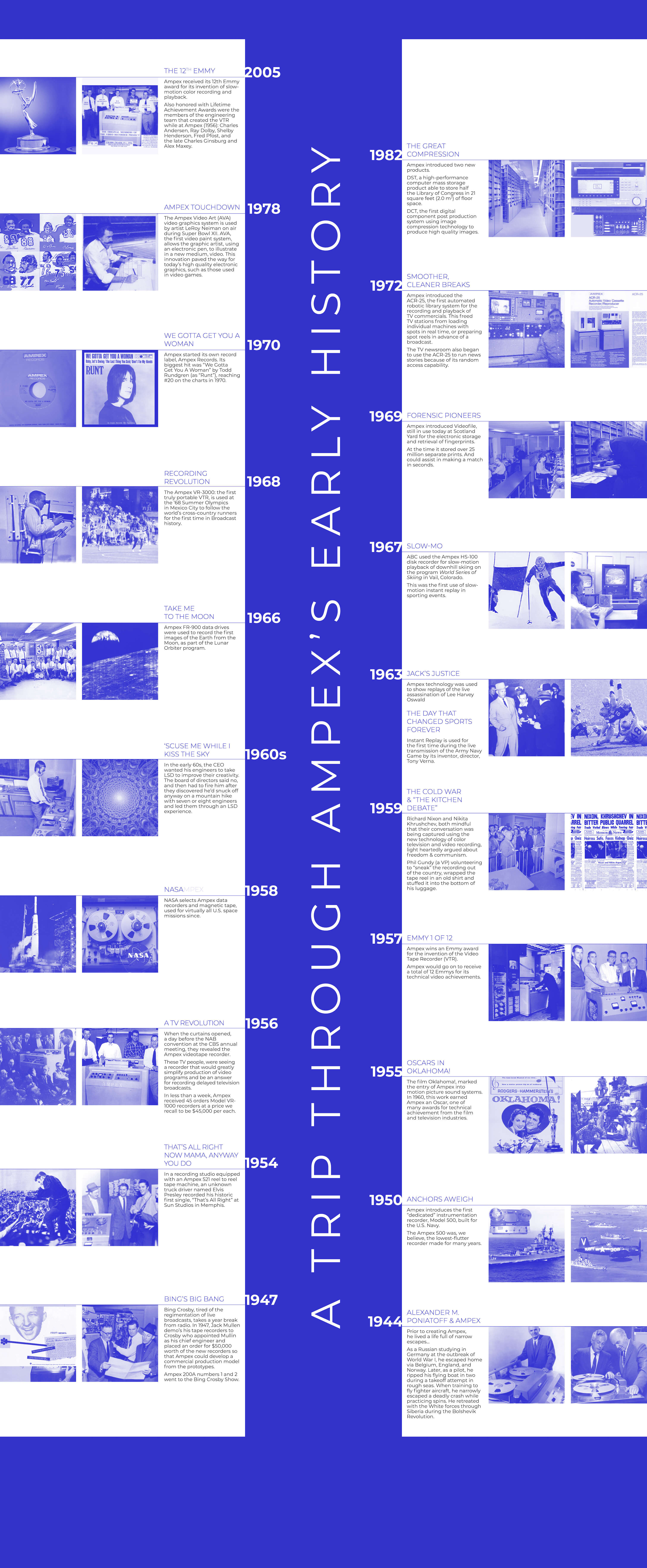ABOUT
Starting from our foundational years in 1944 at the bottom, trace the upward evolution of Ampex Data Systems® to our latest achievements. Discover our storied legacy as it ascends to today.
HISTORY


Starting from our foundational years in 1944 at the bottom, trace the upward evolution of Ampex Data Systems® to our latest achievements. Discover our storied legacy as it ascends to today.

